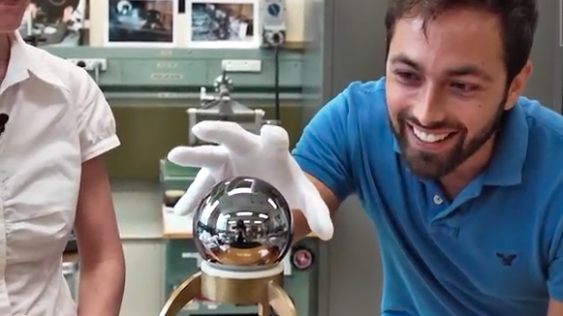
The kilogram is the only base unit in the SI system defined by an object—a platinum-iridium alloy cylinder kept in a vault in France. Efforts are underway to define the kilogram based on fundamental material properties. (Credit: Muller; YouTube.)
Stronger! Faster! Cheaper! These are the daily calls-to-action of engineers, and progress depends on the ability to measure accurately, precisely, and consistently.
Accuracy, precision, and consistency underlie the science behind measurement. The International System of Units (or SI, from the French, ‘Le Système International D’unités’), also known as the ‘metric system,’ is the most common global system of units for measurement.
It comprises seven base units—length, mass, time, electric current, temperature, amount of substance (mole), and luminous intensity. All other units of measure derive from these seven. The US National Institute of Standards and Technology website provides a comprehensive list of derived units, as well as definitions of the base units.
Rules-of-thumb like, “A pint is a pound the world around,” do not cut it with measurement scientists. They search for definitions of base units that relate to fundamental physical properties. Thus, according to NIST’s website, a meter is “the length of the path travelled by light in a vacuum during a time interval of 1/299,792,458 of a second.” How big is a second? The NIST website defines it as “the duration of 9,192,631,770 periods of the radiation corresponding to the transition between the two hyperfine levels of the ground state of the cesium 133 atom.”
Clearly, measurement science is extremely sophisticated.
Thus, the definition of the kilogram base unit appears crude and circular by comparison—“it is equal to the mass of the international prototype of the kilogram.” The “international prototype of the kilogram” is an actual object—the world’s official kilogram—and is kept at the Bureau International des Poids et Mesures in France, where it has been since 1889. The BIPM website admits, “The main disadvantage of this definition is that it relies on the long term stability of the mass of a material artifact.” And, it appears that the IPK’s mass is not stable.
Back in 1889 when the IPK was made of a platinum-iridium alloy, six replica copies were made. BIMP measured them several times between 1946 and 1989 and discovered that the masses of the seven supposedly identical cylinders diverged with a spread of about 50 μg over the century.
In 1999, the General Conference for Weights and Measures recommended an international effort to free the kilogram from the IPK, which led to two projects: the Avogadro project and the Watt Balance project.
The idea of the Avogadro project is to use Avogadro’s constant, which is the number of atoms in 12 g of carbon-12, and turn it inside out. That is, instead of defining Avogadro’s constant in terms of mass (kilograms), use it to define how many atoms define a kilogram. As the video above explains in an informative and entertaining fashion, measurement scientists are using a single crystal ball of silicon 28 to define Avogrado’s constant, and thus, the kilogram.
After an introduction, the host, Derek Muller, uses a few minutes of the 11-minute video to riff on the etymology of the word kilogram, which goes back to the politics in France during the French Revolution era. (It’s interesting and worth your time.) The second half of the video gets into the gritty science, and Muller interviews Katie Green, precision optics scientist at Australia’s Commonwealth Scientific and Industrial Research Organisation (CSIRO), about the “world’s roundest object,” a one-kilogram sphere of silicon 28, including how it was fabricated.
There are several “science popularizers” out there making videos about the coolness of science. Muller is one of the best—he knows his science and he’s an excellent storyteller. He publishes his videos on YouTube through his Veritasium channel.
